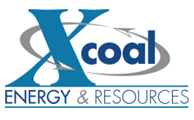
 











|
Signature Sponsor


November 11, 2025 - Coronado Global Resources shares news continues to dominate headlines as the company faces an unprecedented financial crisis. The company's recent quarterly disclosure reveals a financial position that has degraded significantly, with operational losses mounting and liquidity concerns intensifying across multiple quarters. Furthermore, understanding these developments requires examining broader capital raising strategies that companies typically employ during distressed periods.
The Scale of Financial Deterioration
The magnitude of Coronado's financial decline becomes evident when examining performance metrics across the nine-month period ending September 2025. Revenue compression has accelerated dramatically, with the company reporting earnings that fell substantially below previous year comparisons. Moreover, these trends align with broader industry consolidation trends affecting the entire mining sector. Financial Performance Breakdown (Nine Months to September 2025):
The deterioration extends beyond simple revenue declines, with the company experiencing what management described as significant impacts from subdued metallurgical coal market performance. These conditions have created sustained pressure on realised coal prices, directly affecting the company's ability to generate positive cash flows from operations. Credit Rating Implications for Shareholders The dual downgrades from major rating agencies represent far more than administrative adjustments. Both S&P Global Ratings and Moody's Investors Service have repositioned Coronado within categories typically reserved for companies facing immediate distress scenarios. Consequently, investors should be aware of management red flags when evaluating such situations. Credit Rating Changes:
These downgrades signal fundamental concerns about the company's capacity to service existing debt obligations while maintaining normal business operations. The CCC+ rating places Coronado in speculative-grade territory where additional downgrades could trigger automatic default provisions across multiple financial instruments. How Do Debt Covenant Breaches Threaten Company Survival? Debt covenant violations present one of the most immediate threats to Coronado's continued operations. The company has explicitly warned that compliance uncertainties could trigger cascading events that fundamentally alter its business trajectory or force immediate restructuring. In addition, these concerns reflect broader challenges within the mining industry evolution landscape. The Asset-Based Lending Facility Risk Coronado's primary concern centres on its Asset-Based Lending facility, where non-compliance could activate immediate consequences. Management has identified several scenarios that could lead to covenant breaches, each carrying the potential to declare defaults across multiple debt arrangements simultaneously. Critical Risk Factors Identified:
The company has specifically warned that covenant non-compliance on December 31, 2025, could result in ABL Facility default. Management noted this could also trigger cross-default provisions affecting other financial instruments. Going Concern Qualification Explained The going concern notice represents one of the most serious warnings a publicly traded company can issue. This accounting principle assumes a business will continue operating for at least twelve months from the financial statement date. However, it provides the foundation for normal asset valuation and liability assessment. When management concludes that substantial doubt exists regarding going concern status, it indicates multiple scenarios could prevent normal business continuation:
Management has explicitly stated that substantial doubt exists regarding the company's ability to continue as a going concern within one year. This assessment remains valid even accounting for potential mitigation measures including the proposed Stanwell transaction. What Market Forces Are Driving Coal Sector Distress? The broader metallurgical coal market has created an environment where established producers face fundamental viability challenges. Understanding these market dynamics provides essential context for Coronado Global Resources shares news developments. Furthermore, it offers insights into the sustainability of potential recovery scenarios. Metallurgical Coal Price Volatility Metallurgical coal serves as critical feedstock for steel production, creating direct correlation between global steel demand and coal pricing. Recent market conditions have shown particular weakness across key consuming regions. Consequently, pricing levels remain insufficient to cover production costs for many operators. Market Pressure Dynamics:
The sustained weakness in metallurgical coal markets has created what Coronado described as "consequential realised prices". These prices remain insufficient to support profitable operations or debt service requirements. Production Cost Challenges Mining operations face escalating costs across multiple operational categories, creating margin compression when commodity prices decline. These cost pressures include various operational expense categories that directly impact profitability. Operational Expense Categories:
When metallurgical coal prices remain depressed while operational expenses continue rising, profit margins compress rapidly. This potentially creates the negative cash flow scenarios that Coronado currently faces. How Might the Stanwell Transaction Affect Recovery Prospects? Coronado has referenced a potential transaction arrangement with Stanwell Corporation as a possible pathway to enhanced liquidity. However, management has cautioned that this arrangement would not eliminate fundamental uncertainties facing the business. Structured Funding Arrangements The proposed Stanwell arrangement represents a structured funding approach that would deliver financial support over time. Rather than providing immediate capital injection, this timeline-based structure suggests performance-linked or milestone-driven agreements designed to provide operational stability. Potential Transaction Benefits:
The arrangement appears designed to provide breathing room for operations while maintaining flexibility for both parties. However, specific terms remain undisclosed in public filings. Limitations and Uncertainties Management has explicitly cautioned that successful completion of the Stanwell transaction would not resolve underlying challenges. The arrangement provides potential mitigation rather than fundamental solution to market-driven difficulties. For instance, understanding effective investment strategy fundamentals becomes crucial when evaluating such arrangements. Identified Limitations:
The transaction structure indicates that even with Stanwell support, Coronado would remain vulnerable to continued market weakness. Additionally, operational challenges beyond management control persist. What Should Investors Understand About Share Price Movements? The dramatic 29.73% single-day decline to 26 cents reflects systematic repricing based on survival probability assessments rather than temporary market sentiment. This magnitude of movement demonstrates how quickly equity valuations adjust when material going concern information becomes public. According to The Motley Fool, such dramatic movements typically indicate fundamental concerns about company viability. Valuation Considerations in Distress Scenarios Traditional equity valuation metrics become less relevant when companies face going concern challenges. Instead, investors must evaluate scenarios based on distress-specific factors that require specialised analysis approaches. Critical Assessment Areas:
The 26-cent share price represents market assessment of these probability-weighted scenarios. Moreover, it incorporates substantial risk that equity holders could experience complete capital loss in adverse outcomes. Risk Assessment Framework Multiple high-risk indicators are simultaneously present in Coronado's situation, creating compounding threats to equity value. These factors combine to create what analysts typically classify as speculative investment scenarios. High-Risk Indicators Present:
These factors combine to create scenarios where total loss remains a realistic probability for equity investors. Could Coronado Navigate Through Current Challenges? While the situation appears severe, mining companies have historically demonstrated capacity for operational turnarounds through various restructuring mechanisms. Success typically requires combination of internal improvements, financial restructuring, and favourable external market timing. Furthermore, Coronado's investor relations portal provides ongoing updates on strategic initiatives. Potential Recovery Scenarios Operational Turnaround Strategies:
Financial Restructuring Options:
Market Recovery Dependencies Any sustainable recovery depends heavily on external market factors beyond management control. Key dependencies include various external factors that could influence operational viability. External Recovery Factors:
The combination of required internal improvements and external market recovery creates complex probability scenarios that investors must carefully evaluate.
What Lessons Can Investors Extract From This Situation? Coronado's predicament illustrates several critical principles extending beyond individual company analysis to broader investment decision-making frameworks. These lessons apply particularly to resource sector investments where commodity price volatility creates unique challenges. Early Warning Signal Recognition Financial Health Indicators:
Sector-Specific Risk Assessment Resource companies face unique challenges requiring specialised analysis approaches different from other industries. Consequently, investors must develop sector-specific evaluation frameworks. Key Monitoring Areas:
Cyclical Risk Management: Mining investments require understanding of commodity cycles and their impact on operational viability. Companies with high fixed costs become particularly vulnerable during extended downturns, as demonstrated by Coronado's current position. Frequently Asked Questions About Coronado's Crisis What Does Going Concern Actually Mean for Shareholders? A going concern qualification indicates management believes substantial doubt exists about the company's ability to continue normal operations within twelve months. This does not guarantee bankruptcy but suggests significant restructuring or external intervention may be necessary to maintain business continuity. For shareholders, going concern warnings typically indicate:
How Do Credit Rating Downgrades Affect Operations? Lower credit ratings create operational challenges beyond increased borrowing costs. These impacts can significantly affect day-to-day business operations and strategic flexibility. Immediate Impacts:
For Coronado specifically, further downgrades of two or more notches could trigger automatic default under existing facilities. This would occur regardless of other covenant compliance measures. Can Shareholders Recover Value in Distress Scenarios? Recovery potential depends on asset values relative to debt obligations and the success of any restructuring efforts. However, outcomes vary significantly based on multiple factors affecting the restructuring process. Potential Outcomes:
In mining sector restructurings, outcomes vary significantly based on asset quality, market conditions, and debt levels relative to asset values. Equity holders typically receive recovery after all debt obligations are satisfied.
Disclaimer: This analysis is based on publicly available information and does not constitute investment advice. Mining sector investments carry substantial risks, particularly during commodity downturns. Potential investors should conduct thorough due diligence and consider seeking professional financial advice before making investment decisions. Past performance does not guarantee future results, and substantial losses including total capital loss are possible in distressed situations.
|
 








|